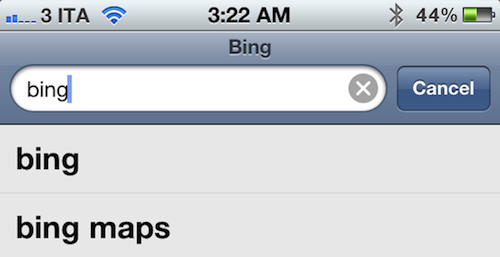Matthew Panzarino’s Bing Impressions
The Next Web’s Matthew Panzarino tries Bing search on his iPhone for a month and reports back with his real-life impressions:
The design is largely cleaner and more attractive than Google’s more cluttered results, and more preview text helps you decide on which link to follow. But, if you’re even reading this article there’s a good chance that Bing isn’t really being made for you.
Instead, Microsoft seems to be heavily targeting the ’99%’ of mobile searchers. Those who will be looking for a restaurant close by, seeing what Lady Gaga is up to now or what the score is on the game. This is smart, because it’s exactly who Apple is targeting with the iPhone.
The whole article is worth a read and offers real-world scenarios for what a search engine should be able to do on an iOS device. I’ve always thought Bing would be a good alternative to Google on the iPhone, and I was also surprised to see Microsoft ship a good dedicated iPad app last year (what’s up with decent search apps for the iPad?).
Actually, since I started using DuckDuckGo in my daily workflow I’ve noticed just how much Google’s search and services are tied to iOS, and how big of a deal it is to be the default engine on a device that sells millions every week. In forcing myself to use a standalone app for search – or type in an address in Safari, then search – I’m noticing how frustrating it is, really, to automatically launch Safari, hit the search box, and remember that Google is in there. Or Bing, if you went through the effort of changing the default search engine in Settings.app. Think about it: not only do Google and Bing benefit from all the iOS users that manually open Safari to search – they also get all the incoming links from third-party apps that forward web pages to Safari, the default browser.
Read Matthew’s Bing impressions, including what he thinks of Maps (likely something even Apple is working on), here.


